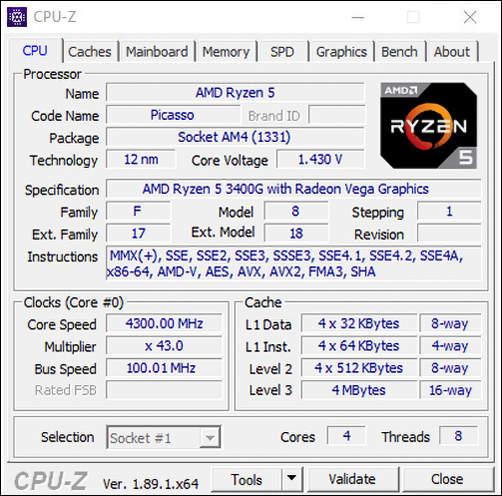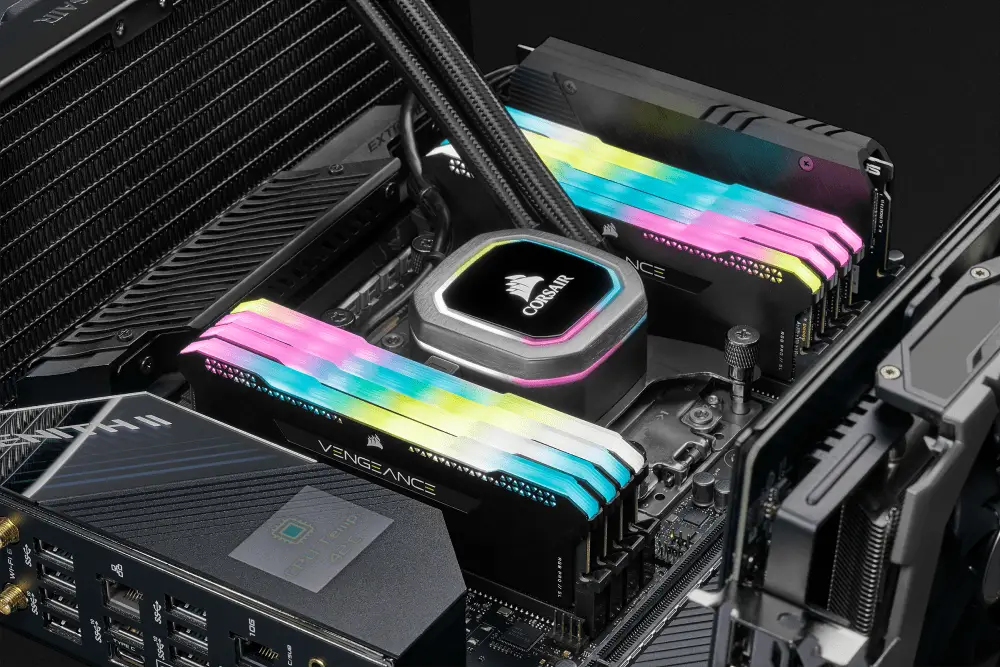Before we being overclocking AMD Ryzen ‘G’ APUs is not precisely difficult but it certainly is not as straightforward as the CPU only variants. Furthermore, the Ryzen 5 3400G is Zen+ based and not Zen 2. As such buyers interested in overclocking them should base their expectations on Ryzen 2000-series CPU models not the non-G Ryzen 3000-series.

The other caveat is there is three parts that have to work in tandem for a successful overclock on a Ryzen APU. These parts are core clock, memory clock, and RX Vega 11 clock (aka iGPU). With three components all sharing the same silicon, Integrated Heat Spreader, and ‘CPU’ cooling solution, temperature is going to be a major limiting factor. While it is indeed true AMD has upgraded the included cooling solution to the more optimal Wraith Spire from the Wraith Stealth, they have also aggressively increased the stock frequencies. This negates most of the stock cooling improvements.
In other words, you still will have to balance overclock frequency improvements in one areas vs another if you hope to keep the entire APU from thermally limiting on a regular basis. So if you plan on using the included AMD Wraith Stealth cooler do not expect to push things all that hard or all that high. We personally would recommend it for only stock configurations. Once you go beyond the stock settings, temperature do have a tendency to quickly escalate to the point that thermal limiting will occur.

With all that taken care of the Ryzen 5 3400G did actually surpass our expectations. We were expecting to be able to not much more than increase the memory and Infinity Fabric frequency. Instead what we got was 4.3Ghz on the cores and 1.6Ghz on the RX Vega 11 Compute Units. Though for long term stable overclock we would scale this back to 4.2GHz on the CCX as temperatures were right at the edge of reason… even with a high-end, water-based cooling solution.
This is not all that much more than the stock settings but it does certainly help boost performance. We could have probably also pushed the RX Vega 11 Compute Units a bit higher but this would have caused us to take away from the CCX ‘CPU’ block. Once again it is a balancing act with temperature. On the positive side, with this combination we were also able to hit DDR4-3200. This too is not as high as we could have gone, but this combination of 4.3/1.6/1.6 on the CPU/iGPU/IF components does result in a rather good combination. One that is higher and faster than the previous Ryzen 5 2400G could accomplish. That may not be the ringing endorsement it could have been if it was Zen 2 based… but it did exceed our expectations.











